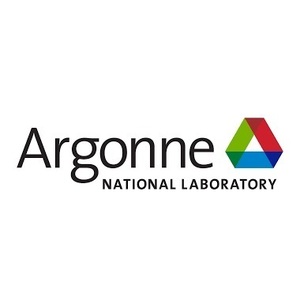ANL releases 2020 updates to GREET Models

October 12, 2020
BY Erin Voegele
Argonne National Laboratory’s Systems Assessment Center on Oct. 9 announced the 2020 release of the suite of Greenhouse gases, Regulated Emissions, and Energy use in Technologies (GREET) models.
GREET is a life-cycle analysis tool that can be used to examine the energy and environmental effects of transportation fuels and vehicle technologies, other end-use sectors, and energy systems.
Major expansion and updates to the GREET Models for 2020 include a new “E-fuel” tab that covers several e-fuel production pathways and a carbon capture and storage (CCS) option for capturing and sequestering fermentation CO2 in corn ethanol plants in the EtOH tab.
Advertisement
The E-fuels tab includes a pathway for ethanol produced from CO2 of corn ethanol plants via gas fermentation and electrochemical reduction processes. According to ANL, there are three design cases with respect to H2 and CO ratios for e-fuel ethanol production. The results show that those three e-fuel ethanol cases have potential to produce near-zero greenhouse gas (GHG) emissions with wind electricity for H2 production and process energy use.
The model also adds two e-fuel pathways with Fischer-Tropsch (FT) synthesis process and two e-fuel pathways for methanol production using CO2 from corn ethanol plants and renewable H2.
In addition, the model includes the supply chain sustainability analysis (SCSA) results of the 2019 state of technology (SOT) of six biofuel production pathways via a range of conversion technologies, including indirect liquefaction, catalytic fast pyrolysis, biochem, algae hydrothermal liquefaction, and combined algae processing.
Regarding woody feedstocks, ANL made updates to the “Woody” tab to incorporate the latest parametric assumptions for temporal effects and variability of pine biomass growth. Updates were also made related to the delivery of high-purity CO2 for algae growth, while a new pathway of palm fatty acid distillate to renewable diesel to the “BioOil” tab was added. The model also incorporates four new pathways for fuels for use in engines co-optimized with drop-in biofuel blends to improve engine performance, as well as new pathways to the RNG tab, and new pathways for green ammonia. The land management change (LMC) emissions from corn stover pathways are updated in the new GREET Models and a new feedstock carbon intensity calculator is added to the model. A wide variety of other updates and changes are also implemented to the 2020 GREET models.
Advertisement
The American Coalition for Ethanol released as statement on Oct. 9 commending Argonne for its updates to the GREET Model. “ACE would like to thank Dr. Michael Wang and his team at Argonne for making updates to the GREET model which will help farmers, ethanol producers, and government agencies better understand how farming practices play a pivotal role in reducing the overall carbon intensity of corn ethanol,” said Brian Jennings, CEO of ACE. “Given the growing support for new clean fuel markets at the state and federal level, particularly among Midwestern states, these timely updates to the GREET model should help us advocate for policies that give credit to farmers for practices which further reduce corn ethanol’s carbon footprint."
“I commend Argonne’s outstanding work to update the best model in the world for assessing the lifecycle greenhouse gas (GHG) emissions of transportation fuels,” added Ron Alverson, ACE board member and main author of the 2018 White Paper. “The new Feedstock Carbon Intensity Calculator will be extremely helpful in evaluating the effect farming practices have on ethanol’s GHG emissions because it will account for corn yield and energy, fertilizer, and chemical use factors for individual farms instead of relying on default values. Also, Argonne has taken a step in the right direction by enabling GREET to assign a soil carbon credit for conservation tillage of corn. We look forward to continuing to collaborate with Dr. Wang and the DoE scientists to incorporate additional updates to GREET in the future, specifically regarding nitrous oxide emissions, corn transportation distances, energy use factors for corn ethanol facilities, and adopting all the factors for 2020 from their time series table. We will also try to build upon the conservative estimate for soil carbon sequestration due to the large effect it can have on overall corn ethanol GHG emissions.”
Additional information is available on the ANL website.
Related Stories
Metro Ports on April 8 announced significant environmental milestone in its voluntary efforts to reduce greenhouse gas emissions. By switching to renewable diesel, the organization reduced its carbon emissions by 85%.
CoBank latest quarterly research report highlights current challenges facing the biobased diesel industry. The report cites policy uncertainty and trade disruptions due to tariff disputes as factors impacting biofuel producers.
The U.S. EIA on April 15 released its Annual Energy Outlook 2025, which includes energy trend projections through 2050. The U.S. DOE, however, is cautioning that the forecasts do not reflect the Trump administration’s energy policy changes.
Iowa Secretary of Agriculture Mike Naig on April 10 announced that the Iowa Renewable Fuels Infrastructure Program board recently approved 114 project applications from Iowa gas stations, totaling more than $2.88 million.
The USDA on April 14 announced the cancellation of its Partnerships for Climate-Smart Commodities program. Select projects that meet certain requirements may continue under a new Advancing Markets for Producers initiative.
Upcoming Events










